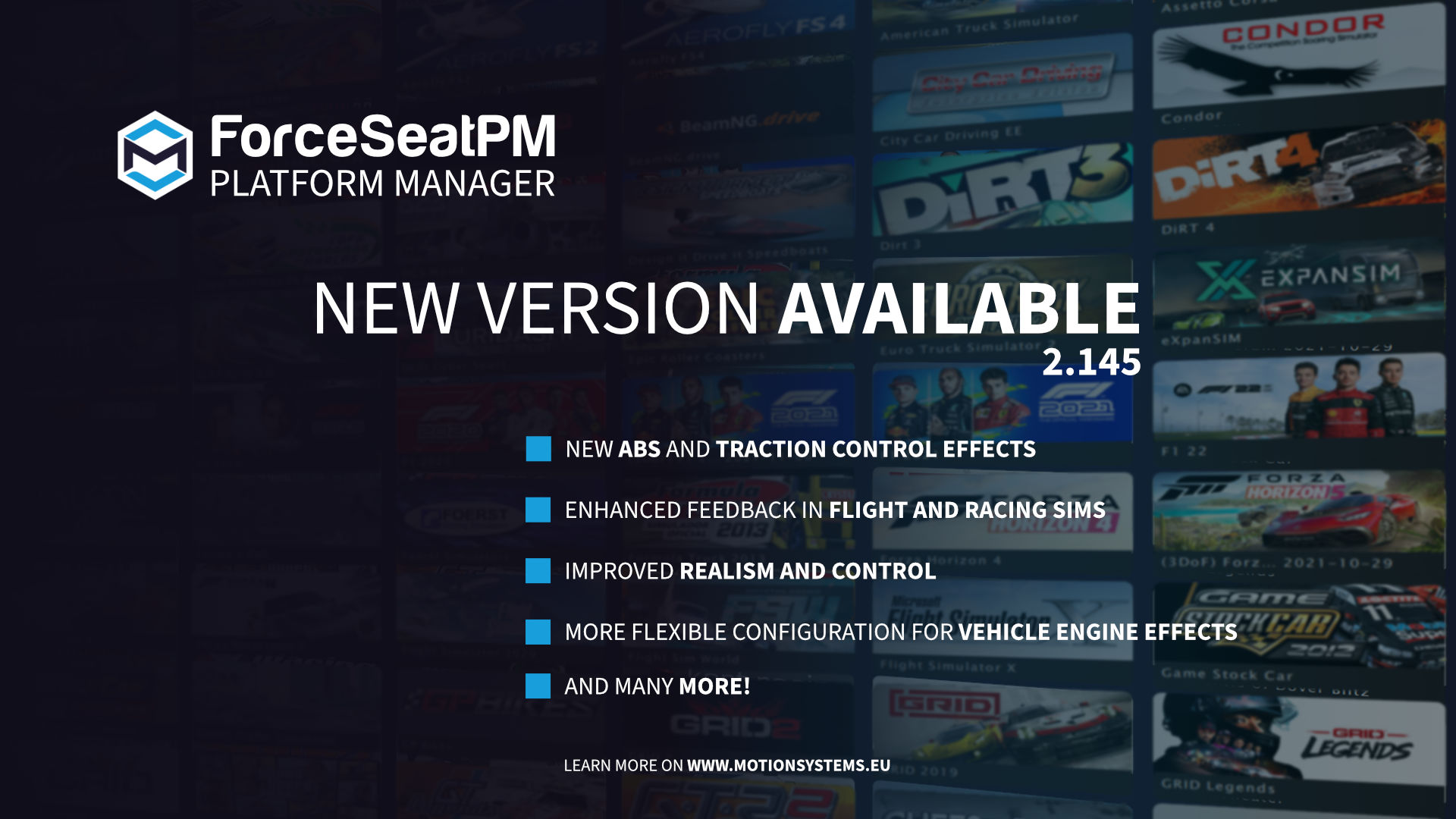
The latest software update for the QS-BT1 and OSD systems brings a wave of exciting new features and improvements, promising to elevate the gaming and simulation experience for users across various platforms.
One of the standout additions is the ability to precisely position the On-Screen Display (OSD) on your monitor. Whether you’re using a single display or multiple monitors, you now have the flexibility to adjust the OSD exactly where you want it. This new option in the Software Configuration makes it easier to manage your display setup and tailor it to your preferences. For fans of flight simulators like DCS World, Flight Simulator, Prepar3D, and X-Plane, there’s an experimental new feature that’s sure to catch your attention. The QS-BT1 can now respond to forward acceleration, such as thrust increases, adding another layer of immersion to your virtual flying experience. It’s an intriguing step forward for those who crave realism in their simulations.
Driving enthusiasts will also appreciate the latest updates, especially the newly implemented ABS Active and Traction Control Active effects in games that support them. These additions bring the QS-BT1 closer to replicating the feel of real-world driving, enhancing your connection to the virtual road. In addition, the QS-BT1 has gained the ability to react to joystick inputs. This is particularly useful for games that don’t provide telemetry data, ensuring that you still get responsive feedback even in titles that might not fully support more advanced setups. If you’re a Gran Turismo 7 player, you’ll be pleased to know that the braking effect for the QS-BT1 has been fixed. This tweak resolves previous issues and helps create a more authentic driving experience in one of the most beloved racing games. Lastly, the update introduces a more flexible configuration for vehicle engine effects. To get the best results, it’s recommended to restore the quick-tunes in the Seat Belt Tensioner section to their default values after installing the update.
Overall, this update brings a host of improvements that not only enhance the performance of the QS-BT1 and OSD systems but also expand their capabilities across a wide range of games and simulations. Whether you’re flying through the skies or racing on the track, these new features are designed to bring you closer to the action.
CHANGELOG
LATEST CHANGES IN NEW RELEASE
2024.08.21: version 2.145:
New features and fixes
- CL01 – Fixed muted down gear change SFX that occurred in recently retuned profiles for NLR Motion Platform V3 and NLR Motion Plus.
- CL02 – Fixed inconsistent NLR Traction Plus operation caused by recently retuned profiles for NLR Motion Platform V3 and NLR Motion Plus.
- CL03 – Introduced more flexible configuration of vehicle engine effects for all QS motion platforms.
- CL04 – VR HeadWay: Fixed a compatibility issue with Richard Burns Rally, whose VR module was unable to load code optimized by a modern compiler.
- CL05 – Richard Burns Rally: Retuned profiles for QS–V20 and QS–BT1.
- CL06 – Triple Screens: Restore the previous position of the window after a restart.
- CL07 – OSD: Added option in Software Configuration that allows to set the exact position of the OSD on the monitor (including additional monitors).
- CL08 – DCS World, Flight Simulator, Prepar3D, X-Plane: An experimental option has been added to make the QS–BT1 also respond to forward acceleration (thrust increase).
- CL09 – DCS World, Flight Simulator, Prepar3D, X-Plane: QS–BT1 can have different gains when the aircraft is in the air and on the ground.
- CL10 – VR HeadWay for SteamVR: Fixed a compatibility issue that occurs when VR HeadWay is not enabled, but SteamVR is detected.
- CL11 – RaceRoom Racing Experience: Enabled ScreenWay for this game.
- CL12 – QS–BT1: Implemented ABS Active and Traction Control Active effects for games that support them.
- CL13 – QS–DD–20: Introduced new configuration for shifters (sequential and H-pattern) which allows you to specify precisely the areas where each gear should be engaged. ATTENTION: This involves new firmware, which will break the current shifter configuration, so you need to reconfigure the shifter after installing the new firmware.
- CL14 – QS–BT1: Added option that enables QS–BT1 to react to joystick inputs, which can be useful for games that do not provide telemetry data.
- CL15 – Direct Input Plugin: It is now possible to control NLR Motion Platform V3 and NLR Motion Plus separately. ATTENTION: This will break the current configuration, so it is recommended to re-create the profile (delete and re-create).
- CL16 – All motion platforms: Implemented ABS Active and Traction Control Active effects for games that support them.
- CL17 – Gran Turismo 7: Fixed braking effect for QS–BT1.
- CL18 – QS–BT1: Introduced more flexible configuration of vehicle engine effects. ATTENTION: We recommend to restore quick-tunes in Seat Belt Tensioner section to its default values after this update is installed.

